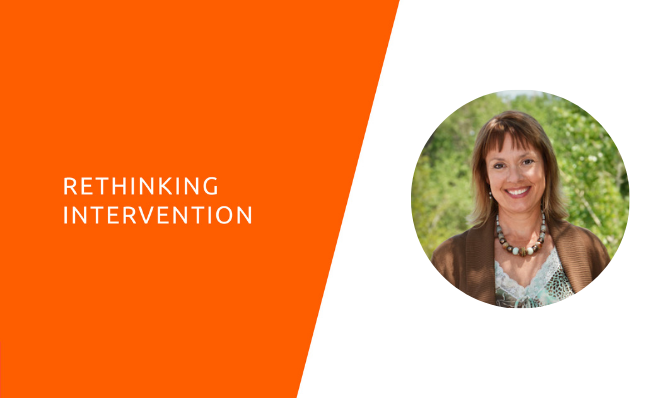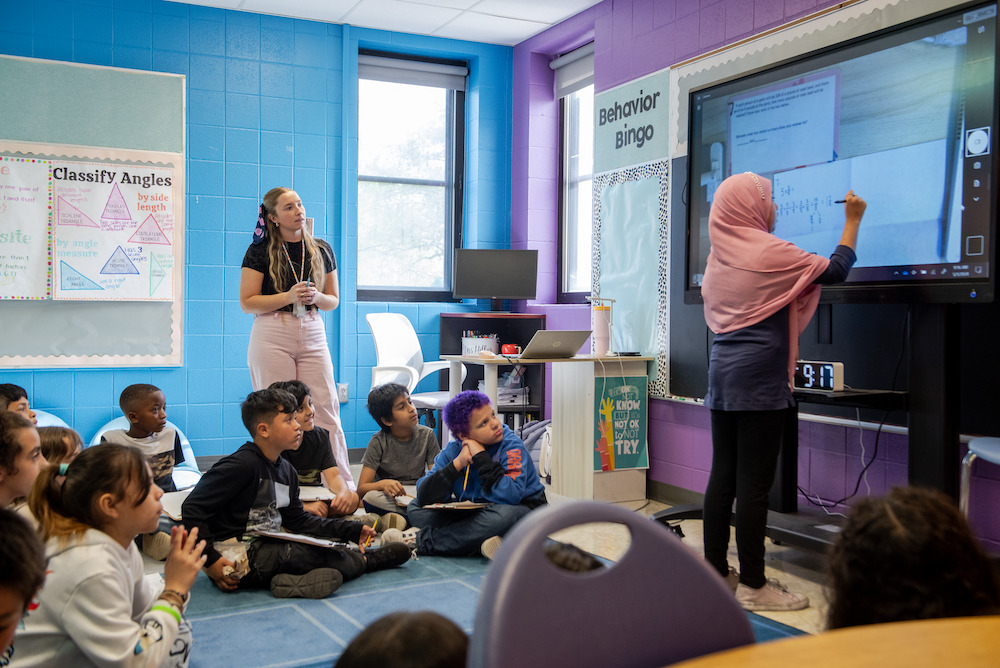
Jody Bintz, BSCS Science Learning
Jody Bintz serves as Associate Director for Strategic Partnerships and Professional Learning with BSCS Science Learning. She works primarily in the areas of leadership development and teacher professional learning.
Jody spoke to Jessica Henderson, Director of Science at Instruction Partners, about the importance of pairing high-quality science materials with aligned professional learning for teachers to support student-centered, phenomena-driven science learning.

JH: From your experience, what works in the job of advancing student learning in science?
JB: What works is a student-centered approach that involves an instructional model with the intentional engagement of student thinking to get their ideas out on the table. And you bring a rich background and pedagogical content knowledge to that model, so that you are aware of common student ideas or misconceptions, and you’re listening for those. And you have high-quality instructional materials that help guide student learning in ways that allow them to have transformative learning experiences. In other words, their ideas are changed in substantive ways toward more scientifically accurate explanations of phenomena or solutions to problems. There are ample opportunities for sense-making to actually apply those important science ideas and practices that are being developed in other contexts. In other words, it isn’t about the one phenomenon—it’s about understanding those important science ideas and practices in ways that allow kids to transfer them to other settings, because we need a more scientifically literate community. Learning experiences have to include those opportunities for transfer. Kids need the opportunity to be metacognitive about their processes.
JH: What is the role of high-quality materials in supporting teachers to do all of those things that you just named?
JB: That goes back to my early teaching career. I started off teaching from a set of textbooks. It was very teacher-centered, textbook-driven teaching and learning. It wasn’t until I started workshopping with Eisenhower funds that I got access to high-quality instructional materials that actually engaged my students with more authentic learning opportunities. I thought, “Hey, there’s something to these materials” that I could not pull that off myself. I was not a curriculum developer by anybody’s shape of the imagination. My beliefs changed because I realized that I didn’t have to be a curriculum developer to be a good teacher. I saw the power of high-quality instructional materials in my own classroom. Then, I had the opportunity to work with BCSC, before I joined the staff at BSCS, where I came to appreciate high-quality instructional materials at a program level, beyond just the replacement units that I was doing in my classroom.
JH: I’ve been thinking about the impact that high-quality instructional materials could have for science teachers nationally, especially if we can figure out how to make access more prevalent across k–12.
JB: It’s not just access to free, high-quality instructional materials—it’s the professional learning that goes alongside them. Using high-quality instructional materials designed for NGSS is a significant shift in teaching and learning. Most teachers just aren’t fully prepared to take that on. I am not criticizing teachers. I am saying that teachers need high-quality, curriculum-based professional learning to go along with those materials, so that they’re able to provide that kind of student-centered, phenomena-driven, problem-driven, three-dimensional teaching and learning that takes a lot of time and listening. So, it’s professional learning alongside access.
JH: I love that distinction. When we were talking about what works for advancing student learning in science, we inevitably come back to advancing teacher learning AND leader learning. That has to happen in order for us to have an impact on student learning. In many ways, I think we’ve put on a burden on science teachers to be the curriculum developers, to figure out how to present this material, and then to also figure out how to teach it without any support.
JB: High-quality instructional materials provide a lever for systemic change. It becomes an equity issue. In a void of high-quality instructional materials, in many cases teachers are on their own. So, if a teacher is pretty good at cobbling together materials, then their kids get a better learning experience. Getting those high-quality instructional materials in the hands of teachers prepared to use them is absolutely critical to equitable learning experiences. Elementary teachers and high school teachers may have slightly different needs. Elementary teachers tend to have greater needs around content deepening, and high school teachers may have greater needs around the pedagogical content knowledge needed to support kids. Teachers frequently haven’t experienced the kinds of learning experiences that we’re talking about. So, ensuring that teachers have had opportunities to learn is also an equity issue. We want all teachers to be prepared to use high-quality instructional materials. It’s good for all kids. It becomes a way of attending to inequities from a systems level, all the way down to classroom intervention.
JH: Educators are thinking about how we support students through disrupted learning. What are the approaches that can support us in supporting students through this disrupted learning?
JB: Regardless of the audience with whom we’re working, we have to care about people. The disruptions are significant. People, in general, are at risk. The mental illness numbers are staggering. The struggles that teachers are having with staying connected with their kids at a distance and the gargantuan efforts that teachers and administrators are making to try and provide the resources that kids need just to stay connected—devices, internet access, and personal connections at a distance. It’s just tough. So, we have to hold on to the personal connection. I’ve heard from leaders around the country that for some teachers who had previously made strides in shifting to more student-centered instruction, that pendulum is swinging back. We’re losing that stretch and going back to things that we can “make work” because everything is just so difficult. So, it feels like we need to hang on to personal connections and learner-centered approaches, whether we’re talking about kids or adults. And it’s really tough.
JH: What would you say if a science educator came to you and asked, “What causes harm in a science classroom for science learning? What is it that I should not do?”
JB: We have to stay clear of worksheet mania, and the only way that I know how to do that is with resources. You’ve got to have Zoom meetings where you can go into breakout rooms so that you can get groups of kids talking in smaller groups, and maybe you need some adults to help monitor those rooms so that all kids are safe. And that takes resources. Kids need the resources at home to have the bandwidth to do that. We need a culture where having your cameras on is okay, and I know it’s not okay in all places. If I had the answer, I would be giving it away for free because this is so hard. It’s hard for adults. What I think we cannot do is expect kids to be on Zoom for six or eight hours a day doing worksheets. I don’t know what the answers are, except that the answers are wearing masks, staying distanced, and getting that vaccine out so that we can get back to some sort of sense of normalcy.


